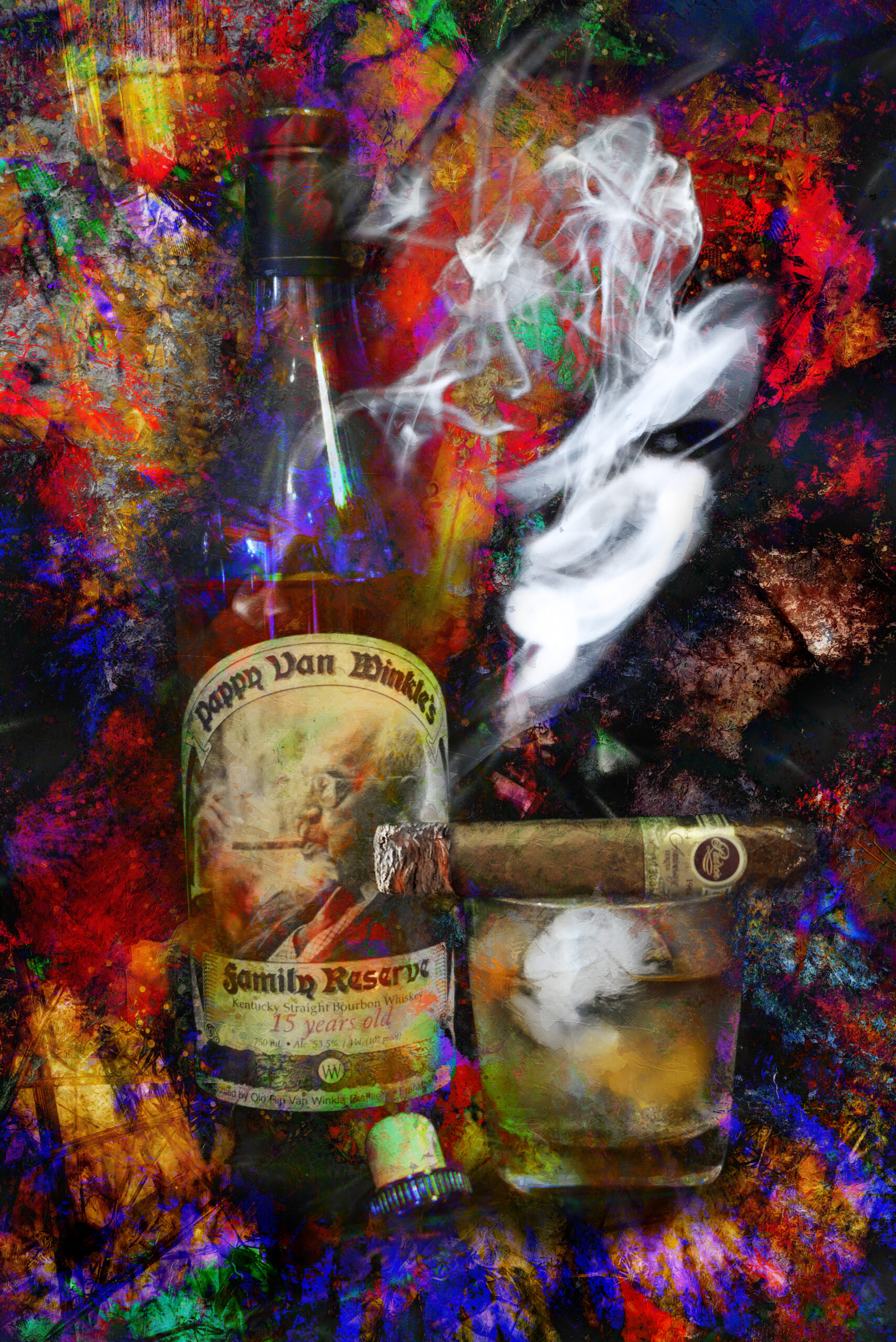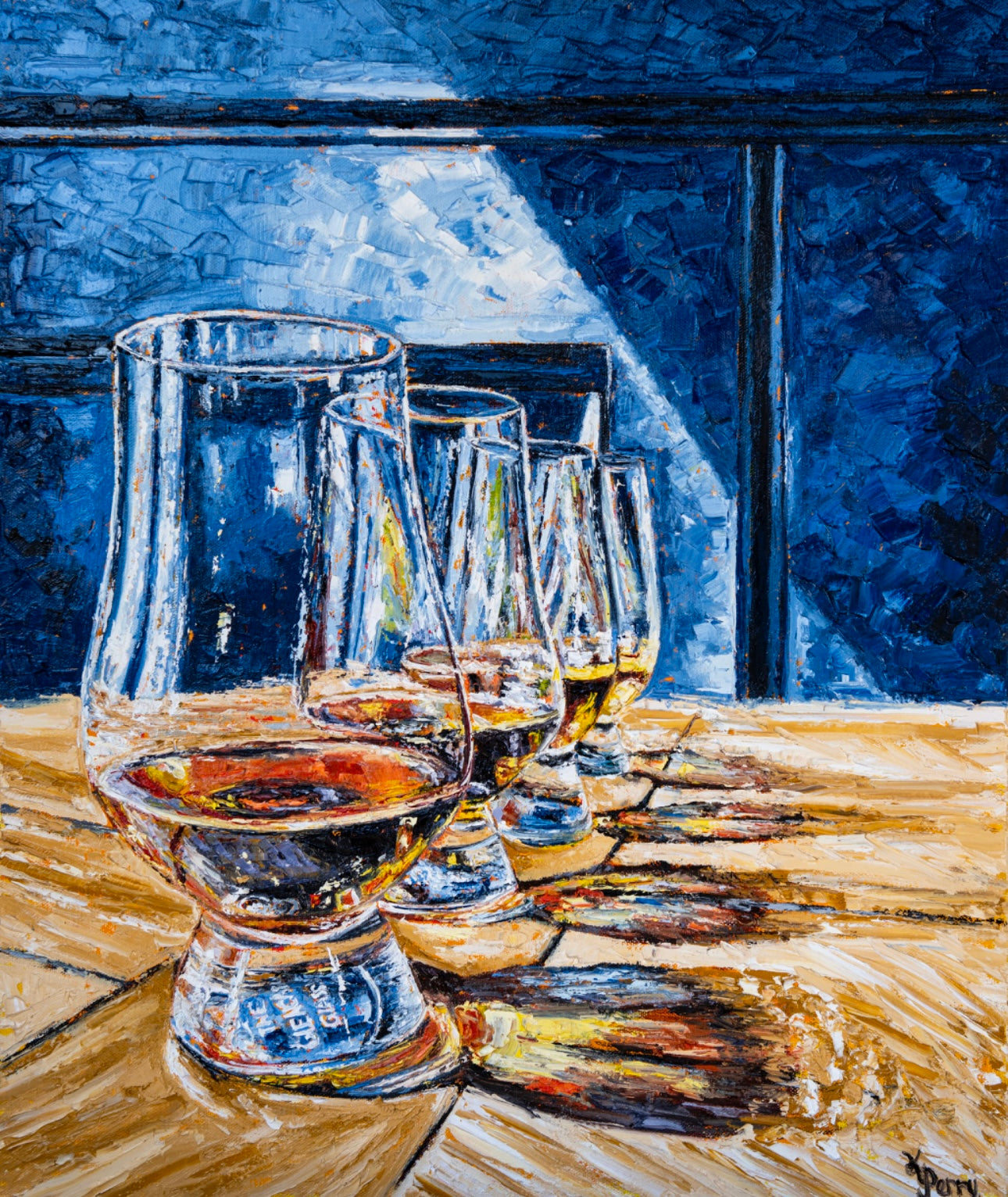Limited Edition Bourbon Art: Why Collectors Are Flocking to Unique Finds
Limited Edition Bourbon Art: Why Collectors Are Flocking to Unique Finds
Blog Article
The Relevance of Whiskey Art in Celebrating Heritage and Workmanship in the Beverage Industry
The complex connection between whiskey art and the event of heritage and workmanship within the drink market can not be overstated. Through attentively made bottles and labels, bourbon brand names envelop their historical roots and the artisanal skills that specify their production methods. This imaginative measurement not only enhances market allure yet likewise serves as a conduit for social storytelling, fostering a deeper link in between the consumer and the craft. As we discover the numerous aspects of this topic, intriguing questions concerning the effect of modern fads on typical methods arise, motivating additional examination.
The Historical Origins of Whiskey
At the heart of bourbon's allure exists an abundant tapestry of historical origins that trace back to ancient civilizations. The origins of bourbon can be linked to the purification techniques of the Sumerians and Babylonians around 2000 BCE, where early types of fermented grain beverages began to arise. It was in the Center Ages that the art of purification evolved considerably, especially in Ireland and Scotland, leading to the production of whiskey as we know it today.
The term "scotch" itself stems from the Gaelic word "uisce beatha," meaning "water of life." This phrase underscores the cultural relevance of whiskey in Celtic societies, where it was usually related to rituals, celebrations, and communal bonding. By the 15th century, distillation ended up being an identified craft within reclusive areas, paving the way for the establishment of legal distilleries.
As trade courses increased, whiskey's popularity grew, transcending regional boundaries and capturing the interest of connoisseurs worldwide. Whiskey Art. This historic journey reflects not only the craftsmanship behind whiskey manufacturing but also its essential role in social and cultural contexts, noting it as a substantial drink throughout background
Artistic Expression in Branding
Bourbon branding stands as an engaging crossway of creativity and commerce, where visual identification plays a critical function in forming consumer understanding. The visual appeals of whiskey tags, product packaging, and advertising and marketing materials reflect not just the brand name's story but also its core worths and heritage. With creative expression, distilleries convey a story that reverberates with customers, evoking feelings and sparking links.
The use of shade, typography, and imagery in branding serves to separate items in a saturated market. Traditional concepts might stimulate a feeling of authenticity and workmanship, while modern layouts can represent technology and forward-thinking. This tactical imaginative direction improves brand name recognition and commitment, permitting consumers to create an individual relationship with the bourbon they choose.
Moreover, creative expression in branding commonly functions as an event of local heritage. Distilleries frequently integrate neighborhood symbols or historical recommendations right into their styles, developing a sense of place that invites customers to participate in a broader cultural experience. Eventually, the virtuosity behind whiskey branding not only improves aesthetic allure but also enhances the general story of the brand name, cultivating a deeper admiration for the craftsmanship and heritage ingrained in each container.
Workmanship in Container Layout
The virtuosity evident in whiskey branding extends beyond visual identification to encompass the workmanship associated with bottle design. Each bottle acts as a vessel not just for the spirit within, but also for the story it outlines its custom, beginning, and high quality. The layout procedure needs precise interest to detail, as elements such as closure, shape, and material add dramatically to the total understanding of the scotch.
Craftsmanship in bottle layout includes choosing premium glass that can enhance the whiskey's shade and clearness, while also offering a responsive experience for the customer. The silhouette of the bottle have to be both aesthetically enticing and practical, usually mirroring the heritage of the brand. Numerous distilleries choose special shapes or printed logos that stimulate a sense of credibility and history.
Moreover, the tag style and typography play an essential duty in interacting the brand's story. Bourbon Art. A well-crafted container not only captivates the customer's eye but additionally reinforces the brand name's commitment to top quality and tradition. In this means, the craftsmanship of container design comes to be an important facet of the whiskey experience, combining artistry with an extensive regard for heritage
Cultural Relevance of Whiskey Art
Celebrating practice and workmanship, the cultural relevance of scotch art transcends simple looks, intertwining with the historic and social stories of the areas from which it comes from. Each container acts as a canvas, illustrating the special tales, folklore, and traditions that have actually formed neighborhood whiskey-making techniques. The intricate layouts often reflect the heritage of the distillers, integrating icons and themes that reverberate with the society and values of their neighborhoods.

In enhancement, whiskey art plays an essential role in common gatherings and events, working as a tangible web link in between individuals and their shared experiences. By appreciating the virtuosity in whiskey packaging, customers grow a deeper understanding and regard for the craft, inevitably enriching their pleasure of the drink itself.
Modern Trends in Whiskey Presentation
Over the last few years, the discussion of scotch has actually evolved to reflect contemporary preferences and fads while still honoring standard workmanship - Bourbon Art. Distilleries are progressively focusing on aesthetic aspects that boost the overall drinking experience, connecting the space in between heritage and modernity
Cutting-edge container layouts have emerged, usually including lasting products and artistic labels that tell compelling stories. Numerous brands now work together with regional musicians, infusing their products with special aesthetic expressions that reverberate with customers. Furthermore, limited-edition launches are commonly packaged in collectible containers, including worth and charm for aficionados.

Final Thought
Finally, whiskey art functions as an essential conduit for revealing the heritage and workmanship fundamental in the drink industry. With elaborate branding, cutting-edge bottle designs, and culturally considerable creative components, bourbon brand names effectively honor their traditions and get in touch with consumers. This creative narrative not only raises the gratitude of whiskey however likewise strengthens neighborhood identity and pride among producers. Ultimately, whiskey art plays a necessary function in preserving and commemorating the abundant cultural tapestry of whiskey-making.


Workmanship in bottle design involves selecting high-quality glass that can boost the scotch's color and clarity, while additionally supplying a tactile experience for the customer. In this method, the craftsmanship of container style becomes a vital element of the whiskey experience, merging virtuosity with a profound regard for heritage.
In final thought, whiskey art offers as an important conduit for sharing the heritage and craftsmanship integral in the beverage industry.
Report this page